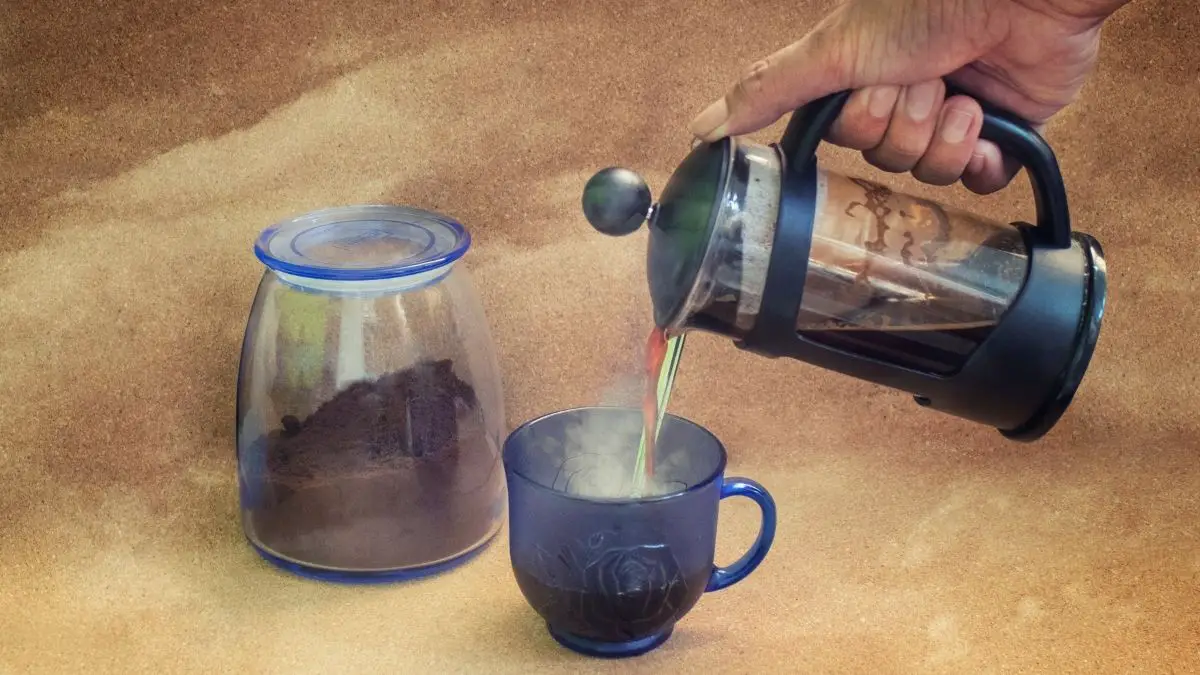If you’ve ever been on a shopping trip to buy a new coffee maker, you’re probably aware that plastic coffee makers are typically more affordable than those made of other materials, such as stainless steel or glass. This would explain why the plastic variety is the most sought-after type of coffee maker on the market. However, one must remember that there’s a risk that comes with buying these types of products.
Plastic coffee makers are generally harmful. But since coffee makers now vary vastly in design and structure, and BPA-free plastics are now a thing, there’s a chance they may not be entirely hazardous.
So, how does one determine if a particular coffee maker is safe or not? This article will cover three things you should look out for when you’re out shopping for an affordable plastic coffee maker.
3 Things You Should Look Out For
Not all plastic coffee makers are unsafe, but those that are unsafe usually have similar characteristics, and that’s precisely what you should look out for. These characteristics include the following:
1. Plastic Interior Components
When you first look at a coffee maker, you can pretty much guess whether it’s safe or not based on its exterior parts. For example, if the device has a plastic handle, you’d assume it’s made entirely of plastic.
However, that’s often not the case.
Coffee makers can have plastic exterior components, while the interior parts are made of entirely different materials, like glass, stainless steel, or other metals. These products should be safe to use.
This is because plastic only becomes hazardous when it comes in contact with hot liquids.
To explain further, plastics consist of numerous chemicals, some of which aren’t tightly bound to the material. Therefore, when they come in contact with hot liquids, they tend to leach away from the plastic and move over to the liquid. The end result would then be a hot coffee with lots of chemicals in it.
In other words, a coffee maker doesn’t have to be 100% plastic-free.
It can still have plastic components, as long as these parts don’t come in contact with the coffee. This may include the handle, lid, outer shell, control buttons, and other exterior components.
In fact, these types of coffee makers are generally better than those made entirely of stainless steel as they are cheaper and safe. Similarly, you’ll find coffee makers with stainless steel handles and outer shells.
This doesn’t necessarily mean they’re safe since they may have plastic interior components.
To conclude, as a general rule of thumb, you must make sure the internal parts like the filter basket and heating chamber are plastic-free in order to say that the device is 100% safe.
2. Automatic Coffee Makers
As you may already know, there are two types of coffee makers: (1) manual and (2) automatic.
As the name implies, a manual coffee maker requires the user to do something to the machine, such as pumping a lever, in order to generate the pressure it needs to brew the coffee.
The main appeal of this is that you have a high level of control over the end result.
On the other hand, an automatic coffee machine will do the grinding, extraction, and brewing with one touch of a button. In short, it’s all about convenience, time efficiency, and ease of use.
However, there is one more thing that the majority of consumers don’t know about this type of coffee machine—it’s almost impossible to find an automatic coffee maker that isn’t made of plastic.
That would explain why consumers tend to struggle to choose between a manual or automatic coffee maker despite the obvious charm of the latter. On the one hand, you can brew coffee very conveniently, and on the other, you can drink your cup of joe without worrying about the consequences.
That’s also why experts suggest looking for manual coffee makers if you want to prioritize safety.
3. Chemicals Other Than BPA
Bisphenol A, more commonly known as BPA, is the chemical that causes the most concern in plastic products. That’s why people immediately assume plastic is unsafe when it contains BPA.
Unfortunately, in the same way, people assume that a plastic product is safe as long as there isn’t BPA on its label. However, that’s a misconception about plastic goods and BPA that people should fix.
In reality, there are chemicals other than BPA that may have the same effect as BPA.
These chemicals may fall into two categories: phthalates and bisphenols:
- What are phthalates? Phthalates are a group of chemicals used mainly to soften polyvinyl chloride plastics and can be found in a variety of plastic products, including coffee makers. Unfortunately, research has found that excessive exposure to these chemicals can damage the kidneys, lungs, and other organs.
- What are bisphenols? Bisphenols are yet another group of chemicals commonly found in plastic objects. It’s used primarily as a way to harden plastic, the opposite of phthalates. They are, however, similar in the way that excessive exposure can lead to an increased risk of various health issues.
For this reason, if you want to look for safe plastic coffee makers, you might want to check the label for chemicals other than BPA that may cause the same effect as this infamous chemical.
What Are The Dangers Of BPA Exposure?
While it’s true that excessive exposure to BPA is indeed harmful, not many people can enumerate the effects it may cause to the body. In that regard, here’s a closer look at what BPA exposure may cause:
- Reproductive Disorders: A 2013 study found that BPA exposure may affect the rate at which egg matures in humans. It may not halt the maturation completely, but it can minimize the likelihood of pregnancy in women. This was then further established when research in 2015 found evidence that the chemical can interfere with the endocrine function of the pituitary gland, which may lead to infertility.
- Heart Diseases: Recent studies have also linked BPA exposure to an increased risk of cardiovascular problems, specifically heart diseases such as hypertension, angina, heart attack, and more.
- Type 2 Diabetes And Weight Gain: According to a 2016 study, there is evidence that BPA exposure may contribute to an increased risk of weight gain and type 2 diabetes.
- Birth Defects: Numerous studies have shown that BPA can cause a variety of birth defects, such as fetal brain development, an increased likelihood of asthmatic offspring, and more.
Because of this, it’s only natural for people to be wary of products containing BPA. Fortunately, the plastic industry has come up with a way to go around this issue, and that is by producing BPA-free plastics.
So, if you want to look for a safe plastic coffee maker, you should look for those that are BPA-free.
Word Of Advice: Look For BPA-Free Coffee Makers
BPA-free essentially means the plastic doesn’t make use of Bisphenol A in its construction.
Hence, it’s advisable that you look for BPA-free coffee makers. Unfortunately, experts warn consumers that some brands that claim their products to be BPA-free may not be telling the truth.
Similarly, some coffee makers may not use the BPA-free label even if they don’t use BPA for its construction or manufacturing. So, how does one distinguish a BPA-free coffee maker from those that are not?
Below are some pointers to help you out:
- Check the label. This is the easiest way you can know if the product is BPA-free. For your reference, the label is the triangle stamp at the bottom of the machine with several numbers in it. Number 7 basically means it contains BPA, so steer away from coffee makers with labels containing this particular number.
- Examine the taste. If you already have a coffee maker and aren’t sure if it’s BPA-free, you can try brewing coffee using the machine. BPA generally has that bad plastic taste, so it should be noticeable.
- Examine the transparency of the plastic. BPA is used to create hard plastics. This type of plastic is generally transparent, so if you can completely see through the material, it should contain BPA.
- Look at the other labels. Apart from the BPA-free label, you can also find several other labels in a coffee maker. For example, it may be labeled as microwave-safe or unbreakable. If so, there’s a good chance the plastic contains BPA. If it’s labeled as handwash only, however, it should be BPA-free.
4 Best BPA-Free Coffee Makers
With the aforementioned tips, it should be fairly easy to find a BPA-free coffee maker for your purposes. But if you’re in a rush to get one now, here are some recommendations:
| PRODUCT NAME | DETAILS |
|---|---|
| Technivorm Moccamaster 59616 | The Technivorm Moccamaster 59616 is a very cool-looking drip coffee machine. It has a robust metal housing and a copper hot plate. The only disadvantage of this product would be its fairly high price. |
| OXO On Barista Brain 9 Cup Coffee Maker | This coffee maker is pretty easy to use and has an attractive design. It’s also programmable, so you can minimize errors when brewing coffee. |
| Cafe Du Chateau French Press Coffee Maker | This machine can be used for both coffee and tea, making it a very versatile product. While this coffee maker does have plastic components, they’re all BPA-free. |
| Cuisinart DCC-3200 14-Cup Programmable Coffee Maker | The main feature of this coffee maker is the ability to adjust its temperature from low, mid, or high. This gives you flexibility over what the resulting coffee may taste or look like. |
Closing Thoughts
Despite the dangers of plastic coffee makers, many consumers still insist on purchasing these products, which is quite understandable. After all, they’re cheap and perform better than even the luxury versions of coffee machines. However, if you have money to spare, it might be best to look for those made of stainless steel and other materials. If not, then you’d better make sure the coffee machine is BPA-free.

